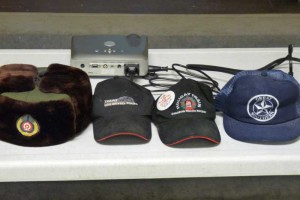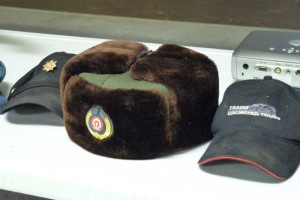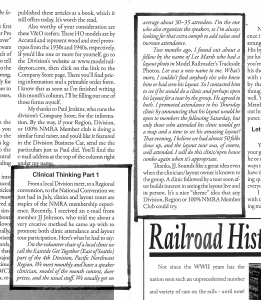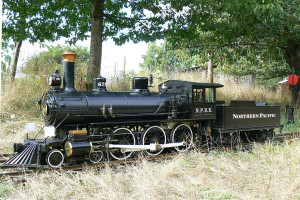Rich Thom
The Skagit Valley and Whidbey (SV&W) Clinic got off to a great start at its first meeting in Oak Harbor on September 10th, with Chairperson Rich Blake welcoming everyone back after the summer break. Actually most members met in August at John and Felicia Marshall’s home for a BBQ, also featuring John’s growing (they always do!) outdoor G-scale railroad. This added “bonus” meeting has become a tradition thanks to the Marshalls’ hospitality.
Rich noted tonight’s attendance was 27, a good beginning for the season (last year’s average was 28). New member Steve Shelley—modeling in HO scale—was introduced and welcomed. Rich reviewed the season’s clinic topics and regional calendar of NMRA and other events. Clinic members again plan to support many of the events such as the Pacific Science Center Show, the Monroe Train Show, and others.
Rich Blake presented the evening’s clinic, “The Art of Ops.” Several members already host regular operating sessions; and others plan to. The theme of Rich’s talk was how guest operators should prepare themselves to help make the session run smoothly. It also improves your chances of getting invited back!

Homework Before the Op Session
If you are invited to operate on an unfamiliar layout, there’s a lot you can do before showing up, anxious to move your first train. Most hosts have abundant material available describing the things you need to know about their railroad. They will email it to you, refer you to a website, or perhaps reference published articles. In addition to this layout-specific information, guest operators should know basic railroad operating practices.
- Prototype or Theme/era for the Layout—The host will tell you the location and timeframe his layout recreates, and will appreciate guests having some basic familiarity with it, which can be researched on the internet.
- What, When, Where and How—The host will almost always provide a Track Plan, Timetable, or often an entire Employee Timetable. Study these carefully. There’s nothing more frustrating than being handed a throttle and told to take a train from A to B, and not having the slightest idea where A and B are.
- General Rules of the Road—Be familiar with general rules, such as can be found in the General Code of Operating Rules, which can be downloaded from the internet.
- Layout Owner Rule Set—Sometimes provided in advance, sometimes not. If they are, read them. How are cars uncoupled on the layout? Is sound used, and does the host want you to use realistic whistle signals? (Know them.) Does he want you to not touch his cars and locos under any circumstances? Does he wish nothing to be placed on the layout, even “harmless” paper? Owners can be very sensitive about such things, and guests should know them.
- Train Control—How is traffic controlled, TT&TO, Track Warrants, CTC etc? Know the basics of these methods, and refresh yourself with the details of the one used.
- Car Forwarding—The host will usually specify the method used: car cards, switch lists, tab-on-car, etc. Know how to use them beforehand.
- DCC/DC—The host will specify whether he uses Lenz, Digitrax, MRC etc. If you are not familiar with the manufacturer’s equipment, do your homework. Instruction manuals can be found on the internet. Also don’t forget how to operate on a DC layout—there are still some around!
At the Layout
Encountering an unfamiliar layout, especially a large and fully-scenicked one, you’ll usually be wowed and start looking at all the details. But right after the orientation tour, you’ll be expected to run a train. Focus on what is operationally important first!
• Electrical Panels—Some are user friendly with clear diagrams, others less so. Ask if some are confusing to you.
- Turnout Controls—Know where they are and how to use them.
- DCC/DC—Locate the DCC plug-in panels.
- Signals—Know the indications! On a CTC layout, for example, if you don’t know what yellow over red means, ask the host for a cheat sheet. Most have them available.
- Problem Trackwork—This refers to complex, not poorly laid, track. Locate complex trackwork that you will need to negotiate, such as three-way and slip switches. If they are aligned by the road crews, know how to throw them to avoid embarrassment when your train gets there!
- Defer admiring the layout until after you are comfortable with the things above.
- Self-Prep—Take with you the accessories that you may need. Operating usually requires four or five hands, to hold train orders, throttle, radio, car cards etc. Pack an apron with pockets and/or neck lanyard; small flashlight; pens/pencils, spare uncoupling picks. If you take your own throttle, pack spare batteries.
- Give Feedback to the Host—He will appreciate knowing the bugs that you’ve encountered. Remove bad order cars, and fill out bad order forms if provided. Blue flag problem trackwork. Identify any locos that need attention. Taking photos of bad order items and sending later also works. Always stay for and contribute to the debriefing at the end of the session.
And Slow Down!
The final section of Rich’s talk addressed slowing down for more realistic operation, illustrated with video clips, some of which Rich shot on his On30 modules. It’s common to see switching moves performed in an op session at a speed impossible in the real world, without brakemen moving at the speed of light that is. Using “one potato two potato” counting to insert simulated time for releasing hand brakes, uncoupling, walking to and from ground throws, etc., Rich demonstrated how these operations can be done much more realistically, more than doubling the time usually seen in typical sessions. Simulating brake tests, setting retainers, and other prototype operations can also add interest and slow things down. Finally, several video clips showed some of the bad habits that even experienced operators can develop over time. One of the best: grabbing a freight car with your left hand to create slack (probably moving the loco at the end of the cut in the process) while uncoupling with a pick in your right hand
Operating can be fun for both guests and host, but guests need to do their half of the work: do the homework!










